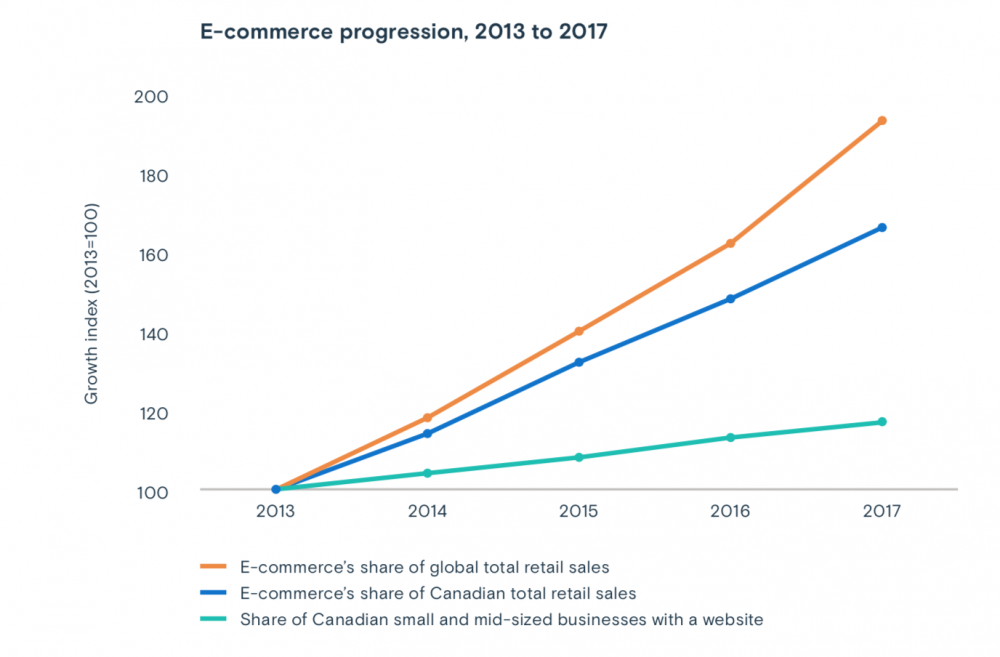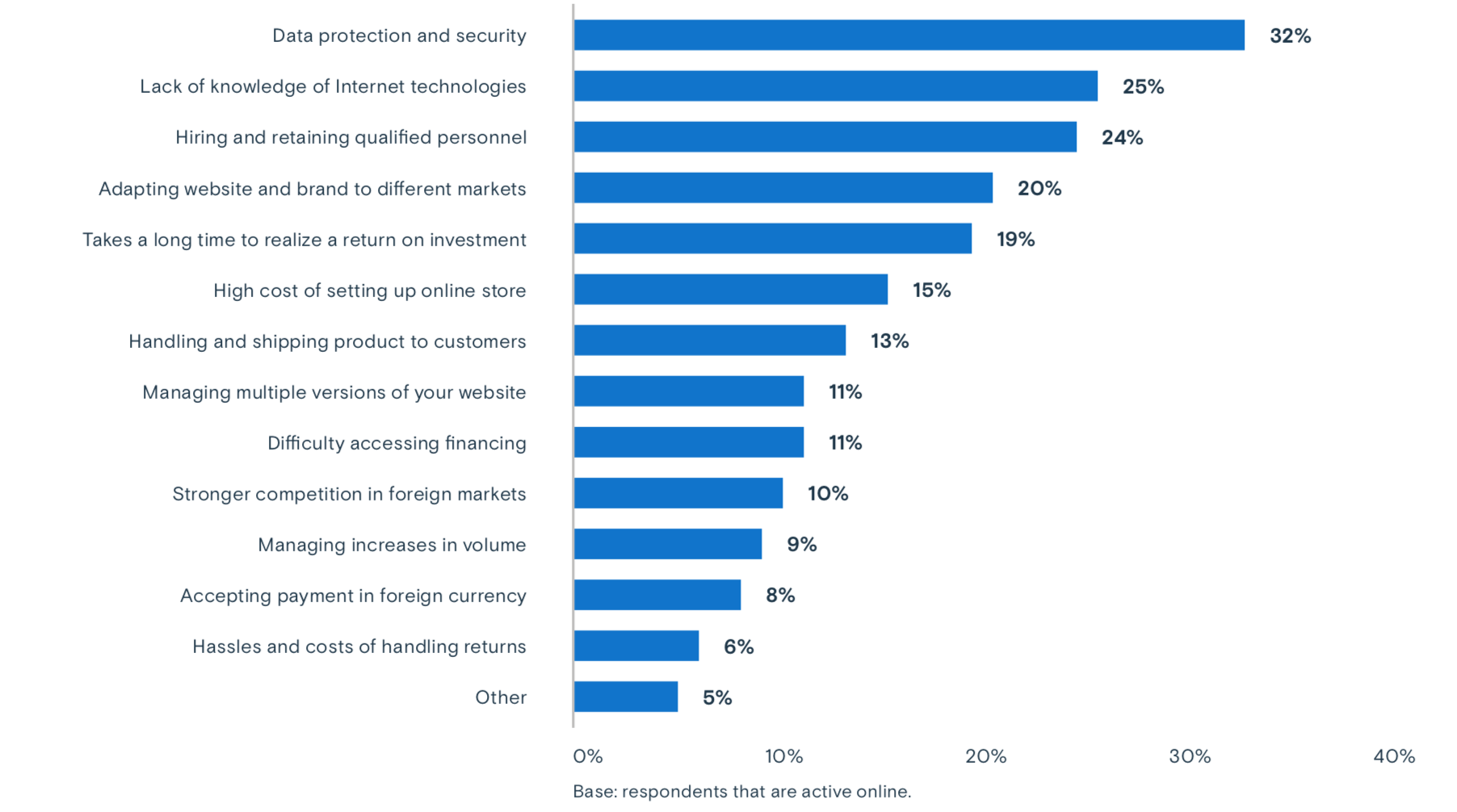The majority of Canadian small and medium-sized business (SMBs) are missing major growth opportunities by not focusing on an online retail presence, according to a new report from the Business Development Bank of Canada (BDC).
“A strong online presence should be at the heart of any business that wants to continue growing and remain competitive.”
BDC’s study, based on a survey of more than 1,400 Canadian businesses with an online presence and with national or global activities, found that growing a business online correlates to higher revenues, direct communication with customers, and easier access to global markets. Yet only four out of 10 Canadian SMBs with an online presence sell, receive, and take orders online.
“The rapid adoption of Internet and e-commerce technologies in Canada and around the world is completely changing the way consumers and businesses search for products, get recommendations, interact with companies and make payments,” the report said. “Having an online presence is now a can’t-miss opportunity for all businesses that want to continue growing and remain competitive.”
Canadian businesses ‘invisible’ to online customers
BDC’s research suggested that the portion of Canadians buying online increased from 43 percent in 2013 to 61 percent in 2019, suggesting that the majority of Canadians are now buying online.
The report found that retail e-commerce sales totalled $2.8 trillion USD in 2018 ($3.6 trillion CAD) and are expected to grow to $4.9 trillion USD ($6.6 trillion CAD) by 2021. Between 2013 and 2017, the growth in the share of Canadian businesses with a website was much slower than the growth of the share of e-commerce in total retail sales in Canada and globally.

This means although the consumer trends and sales point to a growing shift toward e-commerce, a majority of Canadian businesses are not following suit. The report said this is worrisome, as businesses without a strong online presence could risk being shut out of global growth, leaving money up for grabs by online competitors.
“Still too many Canadian entrepreneurs leave money on the table for grabs by Canadian and foreign online competitors. Considering worldwide retail e-commerce sales are expected to double between 2018 and 2021, it is vital that Canadian business owners take their digital presence seriously,” said Pierre Cléroux, vice president of research and chief economist at BDC.
“A strong online presence should be at the heart of any business that wants to continue growing and remain competitive.”
Meanwhile, e-commerce giants like Shopify are making big additions to their offerings. Last month, at Shopify Unite, the company unveiled new features for its business users, including an Amazon-like fulfillment network for qualifying US merchants, AR/VR capabilities incorporated into product pages, and a renewed Shopify POS system.
Montreal-based Lightspeed launched its first loyalty program this year, soon after going public on the Toronto Stock Exchange. The program is intended to give retailers and restaurants the ability to create regular customers out of first-time guests, and to allow existing customers to become more engaged.
Cybersecurity still a top challenge for businesses
Businesses building their market expansion strategy on top of their online strategy are more likely to receive higher revenues and profit growth, and are nearly three times more likely to export, BDC found.
Despite this, the report said companies face several hurdles when expanding their business online, the largest of which are data protection and security (32 percent), lack of knowledge of Internet technologies (25 percent), and finding and retaining talent (24 percent). Only 15 percent of respondents cited the cost of setting up an online store as their biggest challenge.

Another report released this year called cybersecurity the Achilles’ heel of Canadian tech.
NOVIPRO’s report found cybersecurity persists as the biggest area of concern for businesses across the country, with 57 percent owning confidential client information and of these, nearly four in five have already fallen victim to a cyber attack. Twenty-five percent of businesses have no recovery plan in place in the event of a data breach, and nearly half mention they would not inform their clients.
The report also suggested businesses that expand online spent on average $37,458 on their website and $29,210 on online marketing in the last three years, observing that larger institutions tended to spend seven times more than smaller businesses to optimize their online presence.
“The first step in expanding online into new markets is to get your online strategy right. Then, you can build your market expansion strategy on top of it,” said Philippe Desjardins, business advisor at BDC. “As in many business opportunities, planning is the best way to achieve long-term, sustainable success and avoid common pitfalls.”
Image courtesy Unsplash


